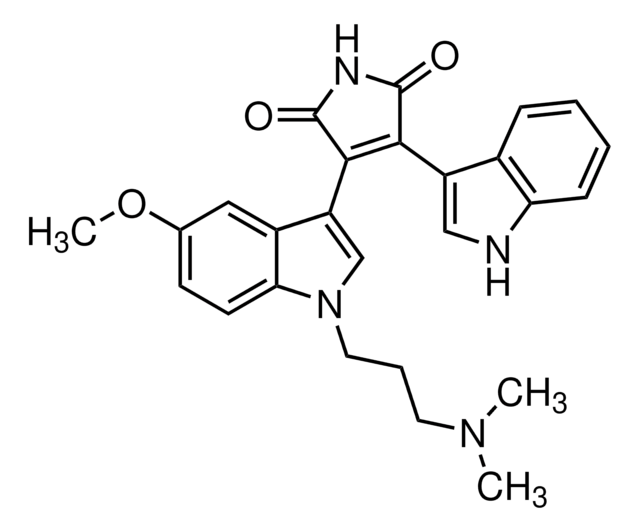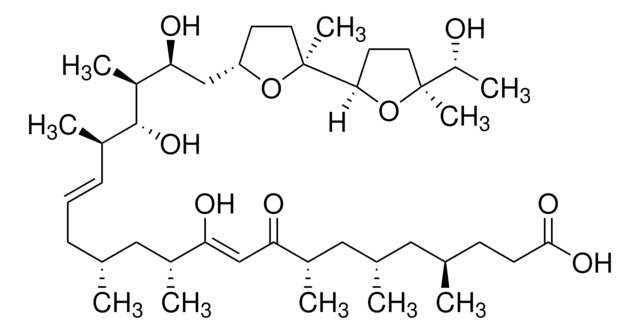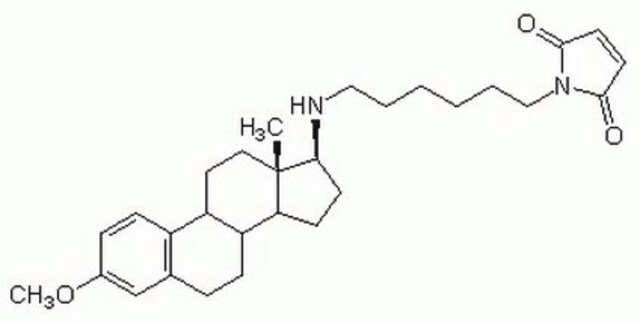476495
PKD Inhibitor, CID755673
The PKD Inhibitor, CID755673, also referenced under CAS 521937-07-5, controls the biological activity of PKD. This small molecule/inhibitor is primarily used for Phosphorylation & Dephosphorylation applications.
Synonym(s):
PKD Inhibitor, CID755673, 7-Hydroxy-2,3,4,5-tetrahydro-1H-[1]benzofuro[2,3-c]azepin-1-one, PKCμ Inhibitor
About This Item
Recommended Products
Quality Level
Assay
≥95% (HPLC)
form
solid
manufacturer/tradename
Calbiochem®
storage condition
OK to freeze
protect from light
color
brown
solubility
DMSO: 50 mg/mL
shipped in
ambient
storage temp.
2-8°C
InChI
1S/C12H11NO3/c14-7-3-4-10-9(6-7)8-2-1-5-13-12(15)11(8)16-10/h3-4,6,14H,1-2,5H2,(H,13,15)
InChI key
AACFPJSJOWQNBN-UHFFFAOYSA-N
General description
Packaging
Warning
Reconstitution
Other Notes
Sharlow, E.R., et al. 2008. J. Biol. Chem.283, 33516.
Legal Information
Storage Class Code
11 - Combustible Solids
WGK
WGK 3
Regulatory Listings
Regulatory Listings are mainly provided for chemical products. Only limited information can be provided here for non-chemical products. No entry means none of the components are listed. It is the user’s obligation to ensure the safe and legal use of the product.
JAN Code
476495-10MG:
476495-MG:
Certificates of Analysis (COA)
Search for Certificates of Analysis (COA) by entering the products Lot/Batch Number. Lot and Batch Numbers can be found on a product’s label following the words ‘Lot’ or ‘Batch’.
Already Own This Product?
Find documentation for the products that you have recently purchased in the Document Library.
Our team of scientists has experience in all areas of research including Life Science, Material Science, Chemical Synthesis, Chromatography, Analytical and many others.
Contact Technical Service






